
Newly promoted managers face challenging circumstances in the early stages of transitioning roles. By understanding the different ways leaders approach business problems, you can learn to speak to each accordingly—integrating the collective knowledge to solve matters of strategic organizational importance.
This session takes a deep dive into each of the seven conceptual shifts necessary to move from managing to leading. You’ll learn practical tips for creating strategies to transition from tactical manager to strategic leader. In this webinar, we’ll discuss:
• Understanding mindsets at a manager versus leader level
• How to recognize behaviors that prevent leadership progression
• Tactics you can use to change behaviors that limit leadership progression
Discover the seven most challenging mindsets of new managers, and how you can create development plans to move to better leadership behaviors.
You can also check out our GoToStage Webinar Channel—your one-stop-shop for viewing UST’s most popular and FREE on-demand webinars—to keep up-to-date on important legal changes and nonprofit trends that may impact your organization.
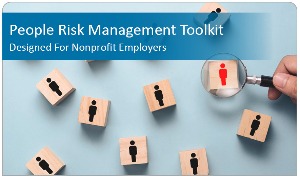
Hiring new employees can be time-consuming, costly, and stressful. Pre-employment assessments can be useful in determining whether or not a potential new hire is a good fit candidate—with the right skills and mind set for your organization. A proven, scientific way to screen candidates and mitigate the risks of hiring mistakes, incorporating pre-employment testing can be the most effective way to gain a more thorough picture of a candidate’s strengths, skills and personality.
As we know, people-related risks within an nonprofit organization can range from bad hires and misconduct to harassment and lack of diversity in the workplace. To help nonprofit employers strengthen their employee risk management practices—and mitigate the risks that can ultimately affect your bottom line—we created the 2021 People Risk Management Toolkit.
This toolkit includes a performance improvement plan, a risk audit questionnaire, risk management best practice tips and more:
Take the time to thoroughly vet your candidates before hiring. The cost of pre-employment screening is minimal compared to the cost of hiring someone who doesn’t stay. Not to mention, that an employee who isn’t a good fit—for the job or your workforce—can also impact the entire team and overall morale.
If you’re looking for access to more HR-specific articles, templates and checklists? Sign up for a FREE 60-Day Trial of UST HR Workplace today! You’ll also gain access to live HR certified consultants, 300+ on-demand training courses and an extensive compliance library.
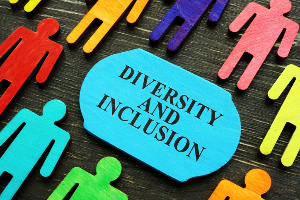
While the nonprofit sector is dedicated to serving those in need, without encompassing diversity, equity, and inclusion (DEI) into their governance and operations, they risk becoming irrelevant. It has been proven that organizations with more diverse workforces perform better financially. Before strategizing a DEI plan, nonprofits must first understand where their organization is and where it wants to go. You can then track your nonprofit’s proficiency in diversity using both quantitative and qualitative metrics, diagnose risks and find opportunities for improvement. Nonprofits will also need to examine internal biases and adopt practices that promote DEI in their work and employment practices as well as on their boards, and in their communications.
Achieving diversity and inclusiveness in your workplace is a process of creating change through education, collaboration, and vigilance. When we apply equity and inclusion to all aspects of organizational structure, we take action towards ensuring that historically excluded groups are recognized, included, and heard. A diverse workplace encourages people to be more vocal, creative, and involved. Commitment to DEI can be demonstrated through governance policies, leadership, and recruitment.
Often when organizations begin diversity work, it can feel daunting trying to figure out where to start. While the process will be different for every organization, below are some things to consider when starting diversity work in your nonprofit.
When we consider our own diversity, check our assumptions, ask questions, and apply our insights to our work, we can create change. Embracing diversity, equity, and inclusion as organizational values is a great way to intentionally make space for positive outcomes and will ultimately help nonprofits better serve their communities and attract a more diverse staff.

You only get one shot at a first impression… In an effort to help nonprofit leaders strengthen their employee onboarding process—making new hires feel welcome, while also setting them up for future success and engagement—we’ve compiled our top resources to create the 2021 Employee Onboarding Toolkit.
This free toolkit will provide you with helpful onboarding checklists, a survey template, and a 30-60-90 day plan. Plus, you’ll get access to our on-demand webinar, which provides strategies for streamlining your onboarding processes, engaging new employees, and crafting an employee experience that reflects and supports your company culture.
We’ve put together our Top Employee Onboarding Tools for Nonprofit Leaders:
1) 30-60-90 Day Onboarding Plan
2) Employee Onboarding Checklist
3) New Employee Orientation Checklist
4) Flyer: 5 Ways to Make New Hires Feel Welcome
5) 30-Day Employee Onboarding Survey
6) Performance Appraisal Checklist
7) Webinar Recording: Nonprofit Virtual Onboarding Strategies
8) Organizational Chart Template
9) Employee Handbook Acknowledgement Form
10) Payroll and Holiday Calendar
Want access to more HR-specific articles, templates and checklists? Sign up for a FREE 60-Day Trial of UST HR Workplace today! You’ll also gain access to live HR certified consultants, 300+ on-demand training courses, an extensive compliance library and more.

Last year, as employers continued to grapple with the ongoing impact of COVID-19, UST surveyed more than 165 nonprofit employers across the U.S. to uncover the latest sector trends.
UST compiled these critical survey takeaways to create the Nonprofit Workforce Trends Infographic. Download your free copy today to discover what your nonprofit peers had to say about prominent turnover reasons, workforce issues and more.
To receive up-to-date sector insights, how-to-guides and legal updates specific to nonprofits, sign up for our eNews today!
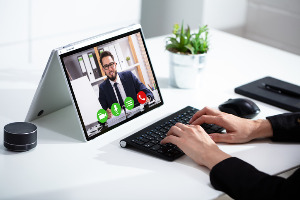
Nonprofits had to react quickly and adapt their internal processes when the Coronavirus hit last March—one being how they hired and onboarded new employees. The logistics of virtual onboarding may seem daunting but how you welcome a new hire is crucial to the success of both the organization and the employee.
This informative webinar recording provides strategies for streamlining your onboarding processes, engaging new employees and crafting a remote employee experience that reflects and supports your company culture.
Watch now and you’ll learn the following key strategies:
You have another opportunity to attend this webinar on February 23rd—be sure to register today to secure your spot! Even if you can’t attend the live session, when you register, you’ll receive the recording and presentation slides as soon as they become available.
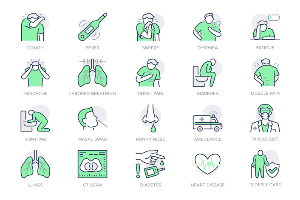
Question: As we begin to return to work, if an employee is out of the office due to sickness, can we ask them about their symptoms?
Answer: Yes, but there’s a right way to do it and a wrong way to do it. In non-pandemic circumstances, employers shouldn’t ask about an employee’s symptoms, as that could be construed as a disability-related inquiry. Under the circumstances, however — and in line with an employer’s responsibility to provide a safe workplace — it is recommended that employers ask specifically about the symptoms of COVID-19.
Here is a suggested communication: “Thank you for staying home while sick. In the interest of keeping all employees as safe as possible, we’d like to know if you are having any of the symptoms of COVID-19. Are you experiencing a fever, cough, shortness of breath, chills, muscle pain, headache, sore throat, or a new loss of taste or smell?”
Remember that medical information must be kept confidential as required by the Americans with Disabilities Act (ADA). If the employee does reveal that they have symptoms of COVID-19, or has a confirmed case, the CDC recommends informing the employee’s co-workers of their possible exposure to COVID-19 in the workplace (but not naming the employee who has or might have it) and directing them to self-monitor for symptoms. Employers should also follow CDC guidance for cleaning and disinfecting.
Q&A provided by ThinkHR, powering the UST HR Workplace for nonprofit HR teams. Have HR questions? Sign your nonprofit up for a free 60-day trial here.
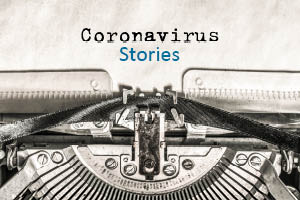
UST’s new blog series, “COVID-19 Nonprofit Stories,” illustrates how nonprofits and their employees have been coping with the unexpected challenges of the Coronavirus. Each blog spotlights one organization and the personal hurdles and workforce strategies they have encountered throughout this pandemic.
Our next story comes from another dedicated UST member—DARTS. Located in Minneapolis, DARTS provides personalized professional services to the aging demographic in the local Dakota County. By providing transportation and home services to their aging community, DARTS helps participants to lead more independent and fulfilling lives. Their services include such things as light housework, outdoor chores, home repair, caregiving resources, transportation and more.
Q: In general, how has your nonprofit been impacted by COVID-19?
A: DARTS provides services to help older adults stay engaged in the community and live in home of their choice. COVID-19 has caused older adults to isolate themselves and their caregivers are either isolated from their loved one or unable to have respite from them. The need for our services grew and we had to rapidly adapt to be able to provide them safely.
Q: What was the most immediate impact your organization faced during the onset of COVID-19?
A: DARTS provides bus rides for groups of older adults, as well as individuals. The group rides stopped immediately on March 13. We took our bus capacity to help fill a need that older adults were not able or willing to go out to food shelves to get groceries by partnering with area food shelves to help deliver those food supports.
Q: What do you see as the long-term impact COVID-19 will have on your organization?
A: How we gather as older adults will be affected for months to come and so we are becoming more nimble with technology to supplement in-person meetings and group gatherings. COVID-19 will help those with means to rely more on technology and it will make the gap larger between those who have resources and those who do not.
Q: How have you addressed employee mental health and wellness during this time?
A: We added intentional time during team meetings to talk about COVID related stress and social justice issues. We hold regular optional coffee breaks so that people can still connect, leaders are proactively reaching out to their team, we are allowing flexibility for those who can to work from home and we got brightly colored DARTS shirts for employees – a cheerful reminder as to how important they are to our community.”
Keep an eye out for future renditions of “COVID-19 Nonprofit Stories,” as we continue to gather insight from the nonprofit sector. In the meantime, check out our COVID-19 Resource Center for more nonprofit-specific content—including unemployment insights, workforce trends, employee wellness tips, COVID-19 FAQs and more!

Question: Can we reduce pay because of an economic slowdown due to COVID-19?
Answer: You can reduce an employee’s rate of pay based on business or economic slowdown, provided that this is not done retroactively. For instance, if you give employees notice that their pay will change on the 10th, and your payroll period runs from the 1st through the 15th, make sure that their next check still reflects the higher rate of pay for the first 9 days of the payroll period.
Nonexempt employees (those entitled to overtime) – A nonexempt employee’s new rate of pay must still meet the applicable federal, state, or local minimum wage. Employees must be given notice of the change to their rate of pay, and some states require advance notice.
Exempt employees (those not entitled to overtime) – An exempt employee’s new salary must still be at or above the federal or state minimum for exempt employees. The federal minimum salary is $684 per week. Several states have weekly minimums that are higher than that (California and New York, for instance, are in the $1,000 per week range). The minimum may not be prorated based on hours worked.
Exempt employee reclassification – If an exempt employee has so little work to do that it does not make sense to pay them the federal or state minimum (or you simply cannot afford to), they can be reclassified as nonexempt and be paid by the hour instead. This must not be done on a very short-term basis. Although there are no hard and fast rules about how long you can reclassify someone, it is recommended that you don’t change their classification unless you expect the slowdown to last for more than three weeks. Changing them back and forth frequently could cause you to lose their exemption retroactively and potentially owe years of overtime.
Employees with contracts or CBAs – If employees have employment contracts or are subject to collective-bargaining agreements (CBAs), you should consult with an attorney before making any changes to pay.
Q&A provided by ThinkHR, powering the UST HR Workplace for nonprofit HR teams. Have HR questions? Sign your nonprofit up for a free 30-day trial here.

To help nonprofits combat the most prevalent day-to-day workforce challenges caused by COVID-19, UST has launched a NEW interactive webinar series called “UST Live.” We’re collaborating with reputable nonprofit leaders & HR experts across the U.S. to bring their collective expertise to you—live—in hour-long, virtual panel discussions.
In our first UST Live webinar, the panel discussed the innovative employee management strategies that are being used for onboarding, training, employee development and employee engagement during these difficult times. Plus, the panel answered attendee’s questions related to HR best practices and employee relations management.
Watch now to discover:
Upcoming UST Live Webinars: This webinar series was designed to equip nonprofits with the strategies and resources they need to survive (and thrive) throughout this pandemic. Be sure to register for our next UST webinars—scheduled for October 15th and November 19th—where we’ll discuss how to develop a sustainable strategy for 2021 as well as innovative recruitment best practices.

UST maintains a secure site. This means that information we obtain from you in the process of enrolling is protected and cannot be viewed by others. Information about your agency is provided to our various service providers once you enroll in UST for the purpose of providing you with the best possible service. Your information will never be sold or rented to other entities that are not affiliated with UST. Agencies that are actively enrolled in UST are listed for review by other agencies, UST’s sponsors and potential participants, but no information specific to your agency can be reviewed by anyone not affiliated with UST and not otherwise engaged in providing services to you except as required by law or valid legal process.
Your use of this site and the provision of basic information constitute your consent for UST to use the information supplied.
UST may collect generic information about overall website traffic, and use other analytical information and tools to help us improve our website and provide the best possible information and service. As you browse UST’s website, cookies may also be placed on your computer so that we can better understand what information our visitors are most interested in, and to help direct you to other relevant information. These cookies do not collect personal information such as your name, email, postal address or phone number. To opt out of some of these cookies, click here. If you are a Twitter user, and prefer not to have Twitter ad content tailored to you, learn more here.
Further, our website may contain links to other sites. Anytime you connect to another website, their respective privacy policy will apply and UST is not responsible for the privacy practices of others.
This Privacy Policy and the Terms of Use for our site is subject to change.
UST maintains a secure site. This means that information we obtain from you in the process of enrolling is protected and cannot be viewed by others. Information about your agency is provided to our various service providers once you enroll in UST for the purpose of providing you with the best possible service. Your information will never be sold or rented to other entities that are not affiliated with UST. Agencies that are actively enrolled in UST are listed for review by other agencies, UST’s sponsors and potential participants, but no information specific to your agency can be reviewed by anyone not affiliated with UST and not otherwise engaged in providing services to you except as required by law or valid legal process.
Your use of this site and the provision of basic information constitute your consent for UST to use the information supplied.
UST may collect generic information about overall website traffic, and use other analytical information and tools to help us improve our website and provide the best possible information and service. As you browse UST’s website, cookies may also be placed on your computer so that we can better understand what information our visitors are most interested in, and to help direct you to other relevant information. These cookies do not collect personal information such as your name, email, postal address or phone number. To opt out of some of these cookies, click here. If you are a Twitter user, and prefer not to have Twitter ad content tailored to you, learn more here.
Further, our website may contain links to other sites. Anytime you connect to another website, their respective privacy policy will apply and UST is not responsible for the privacy practices of others.
This Privacy Policy and the Terms of Use for our site is subject to change.